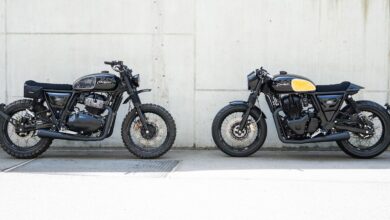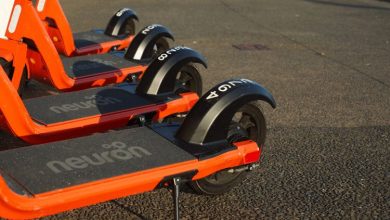2023 Kawasaki ZX-4RR Review | Motorcycle Test

2023 Kawasaki ZX-4RR Review
KRT Edition
Kawasaki ZX-4RR Test by Rennie Scaysbrook
If you were lucky enough to grow up in the 1990s, small capacity inline four-cylinder motorcycles were omnipresent. Honda’s CBR250RR and CBR400, Yamaha’s FZR250 and 400, Suzuki’s GSX250 and GSX-R400, and of course, the Kawasaki ZXR400. In Australia, these things were ripping roads and ear drums apart in the 90s, riders bouncing the little four-pots towards, in some cases, near 20,000 rpm redlines.

As time went on and those kids who were using these wee four-cylinders as learning tools for superbike riding grew up, so too did the people that made them. All the Japanese manufacturers gradually decided that twins were more adept (and cheaper) to make than the fours of the previous couple of decades, hence we get diluted junior “sports” bikes like the Honda CBR250R and the Suzuki GSX250R.
Someone clearly forgot to tell Kawasaki this. Or maybe Kawasaki got sick of the low drone bark of their ultra-successful Ninja 400 and decided that, ‘Yes, things really were better back in the day. Let’s bring said day back, shall we?’
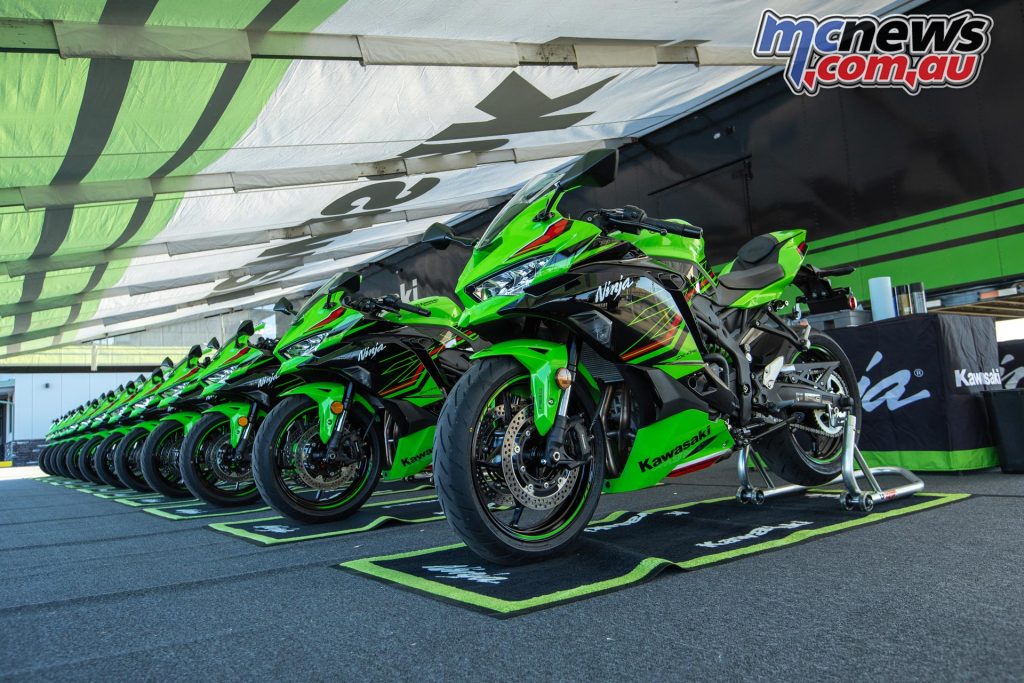
So it is my great pleasure to deliver a road test on a bike that 16-year-old me would have given any number of questionable favours for in order to have in my then non-existent garage.
I don’t think I’ve been this excited to ride a bike for a long time, mainly because, after scaring myself half to death on a 215 horsepower BMW S 1000 RR at the Isle of Man TT, something with a claimed 74 horsepower (55 kW) and 37.6 Nm of torque sounds right up my teenage brain’s alley.
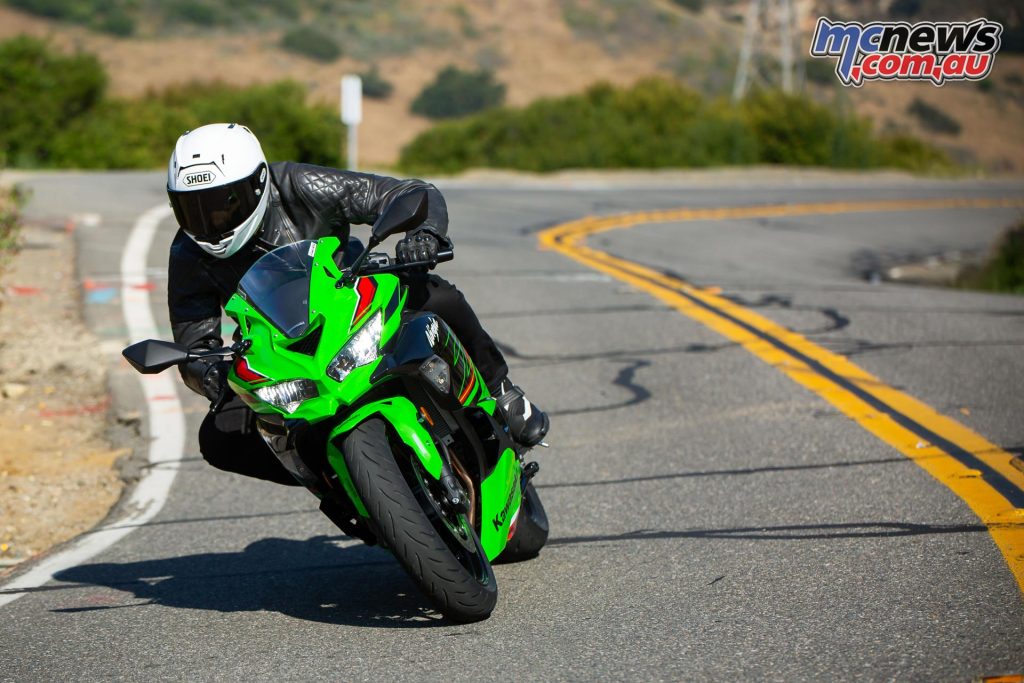
The 2023 Kawasaki ZX-4RR comes in two editions—the base black model ($11,894 +ORC) and this KRT Edition complete with two-way quick-shifter ($13,294 +ORC), the colours of which are modelled on what adorns Captain Kawasaki Jonathan Rea’s WorldSBK ZX-10RR.
Other than the graphics and the aforementioned quick-shifter on the KRT edition, they are technically identical and both are coming to Australia. There will be no LAMS learner legal version available in Australia. Check Kawasaki Australia website for ride away pricing in your postcode. A handful have hit our shores already and Australian Kawasaki dealerships are expected to have stock available from late August.
Kawasaki’s been a proponent of the four-cylinder for almost as long as it’s been around. They championed the first (in my opinion) superbike in the Z1 900 of the early ’70s and ever since if you needed a good, reliable and relatively cheap superbike motor on which to scrape a knee on, Team Green was usually where you’d end up.

The four-cylinder inside the 400 doesn’t rev quite as high as those four-cylinder forefathers of the 1990s, but with a redline of 16,000 rpm, it’s not far off. Truth be told, the motor’s power and torque peak out at an identical 14,500 rpm, but hearing the little motor scream its lungs out around town gives the kind of pleasure normally reserved for locked bedroom doors.
However, although the noise emitting from the 400 is aurally exceptional, there is some pretty decent performance to back it up. Ram air is part of the package and its exceptionally light flywheel means it spins up very quickly. Between 7000-11,000 rpm there’s plenty of performance on offer, and you’ll hit 170 km/h faster than you’d think with the number 400 stamped on its graphics.
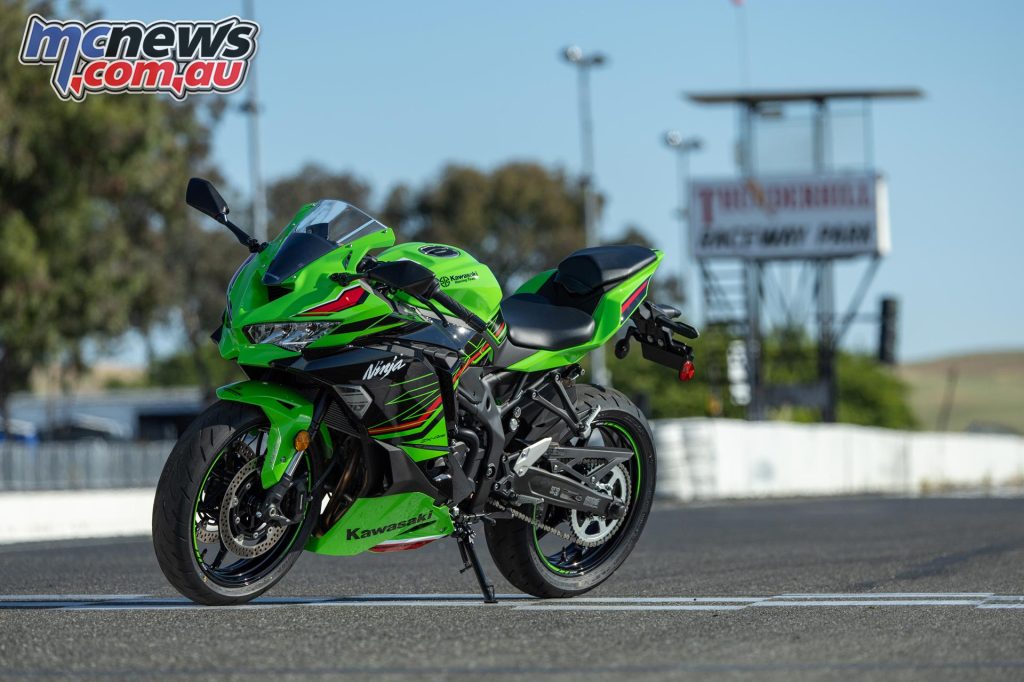
With such light internals the throttle response is buttery smooth, especially so because you don’t get a massive hit of torque when you open it up. Further helping in the initial power hit is one of four riding modes in Sport, Road, Rain and Rider, the last being a programable mode that lets you use F (Full) or L (Low) power and any of the 1-3 levels of traction control, plus off.
You might think having programable traction control is a bit of overkill for a bike of this size but the systems are now almost completely developed across so many models that Kawasaki now just plugs and plays. The same with the three throttle maps, which have about a 20 percent difference in the amount of power that reaches the tyre.
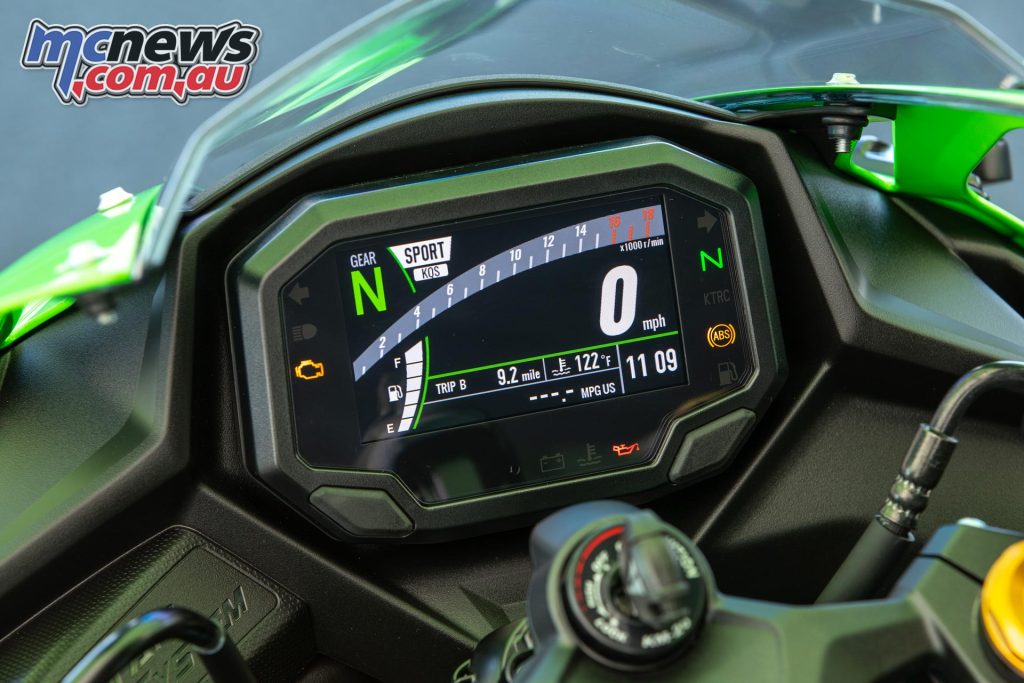
Kawasaki’s added a bit of extra tech in the up and down Kawasaki Quick Shift system (KQS), another product from years of development across multiple models. Again, with such light little internals, the gearshift is exceptionally smooth — a good thing because this is still a small capacity four-cylinder and you’ll be using the gearshift a lot to keep the revs in the happy zone north of 10,000 rpm.

As you’d expect, the six-speeder is matched to Kawasaki’s slip and assist clutch, which will reduce the chances of the rear wheel locking under heavy braking and high rpm downshifts.
The engine is no doubt the star attraction of the ZX-4RR package but the chassis is pretty good as well. It looks and feels like a porky Ninja 400, right down to the raised clip on handlebars and the absolutely miniscule screen that even 16-year-olds will find difficult to get behind.
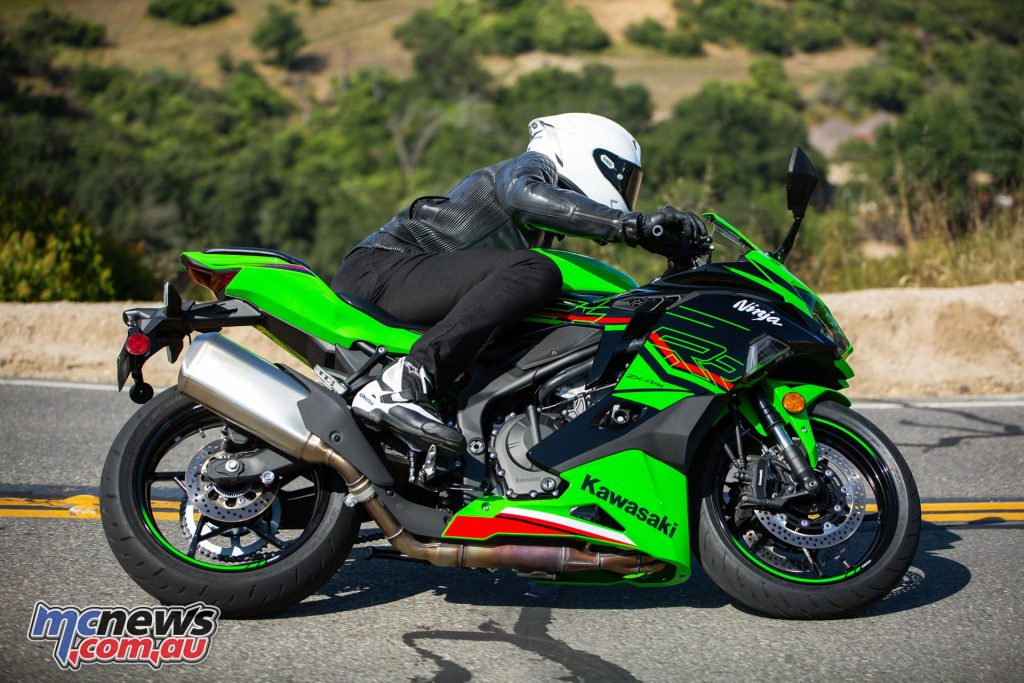
The advantage of the handlebars is you’re essentially in a nakedbike stance, which gives the best of both worlds as far as traffic comfort and sportsbike scratching. At 183 cm tall, it’s surprising how well I fit on the little 400 as the pegs are a reasonable distance to the road and the seat is for the most part pretty comfortable.
For the record, it’s actually more comfortable than the CBR1000RR-R SP I tested a while back, which feels odd to say given their respective price points.

The main chassis is similar to the Ninja 400 in its streel trellis design. Although an annoying feature is the subframe and main chassis are cast as one unit, so if you have a small tip-over and bend the subframe, you could be up for a new frame entirely (or you could just go bushman style and bash the subframe back into shape—your choice).
There’s a little bit of RGV250 in the ZX-4RR with the banana-style swingarm that has the horizontal back link shock mounted directly to it with no linkage, and although it’s a bit soft (it is designed for riders a tad bit lighter than my 86 kg) the shock is fully adjustable. On the front-end there’s the Showa – Big Piston Separate Function Inverted Fork, with preload adjustment.
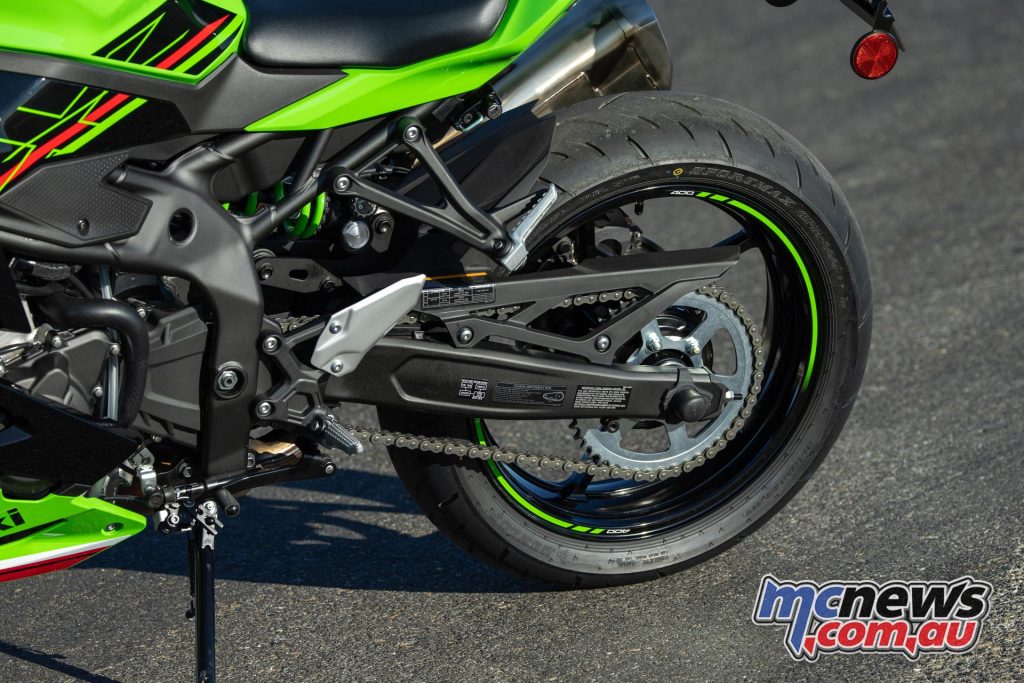
There’s also quality brakes in the dual four-piston monobloc calipers gripping 290 mm discs. At the rear, a single piston caliper slows down a 220 mm disc, each end fettled by unswitchable ABS. A bit of money has been saved on the front master-cylinder, which has a slightly wooden feel at the lever under light application, although braking power isn’t an issue.
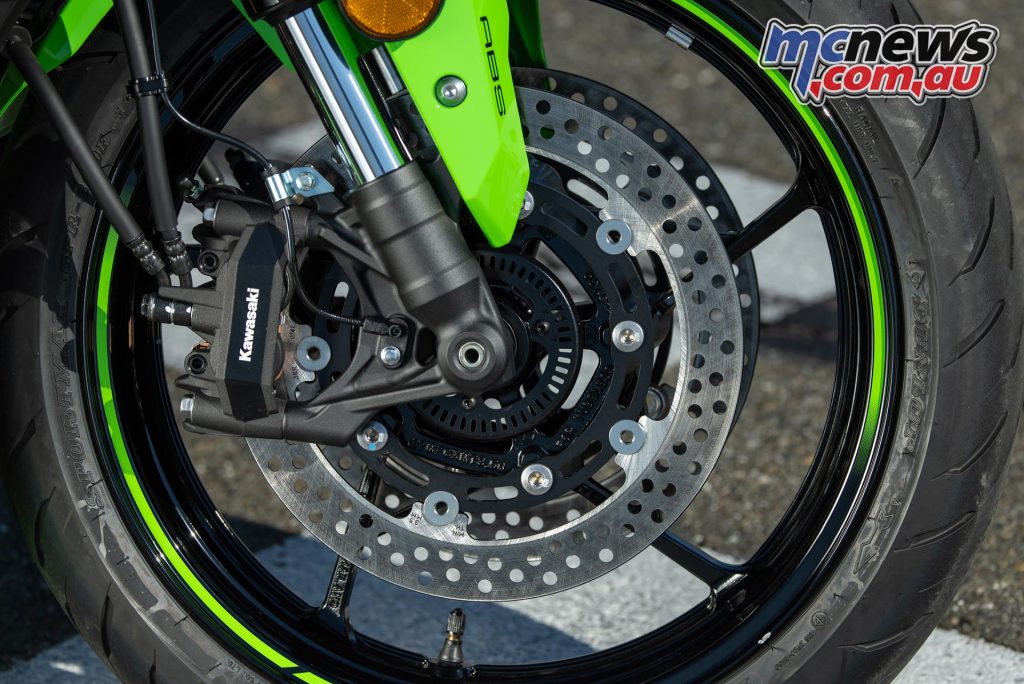
Like the shock, the base settings are a little on the soft side but that’s easily fixed with a couple of turns of preload. It’s extremely light on its feet and changes direction with as very nearly as much speed as the smaller Ninja 400 that it takes much of its design from.
You can load up the front Dunlop GPR300 and charge through corners at speed but it’s squally happy just riding around town as the relaxed ride position lends itself to, dare I say it, commuter riding.

Compared to the twin-cylinder Ninja 400 you get an extra litre of fuel at 15L and there’s a claimed 20 kg increase in curb mass to 188 kg, but the ZX-4RR holds its girth so well the difference is largely negligible.
The four-cylinder ripper holds far more sex appeal than the twin-cylinder Ninja 400, so much so that it makes the $11,894 +ORC for the base model, an increase of $4200 over the Ninja 400, seem totally worth it in my book.

Style-wise, the ZX-4RR has pretty much everything the 636 and ZX-10R has. LED indicators and brake lights, five inch TFT dash that runs everything you’d expect from a Bluetooth compatible system — including the use of the Kawasaki Rideology App that allows you to change bike settings like TC and throttle map, take calls, and log your ride. However, turn-by-turn navigation that’s mirrored to the screen isn’t yet available.
However, turn-by-turn stuff should be the least of your concerns on a bike like this. In America, legendary turner Chuck Graves has been hard at work developing a bunch of go-fast parts for the ZX-4RR that’ll allow it to have performance pretty close to what various championships have in Twins Cup racing, with power in the mid-to high 80 hp ranges. See the gallery below for a look at some of the accessories.

This will translate into one hell of a bike for people looking for a (relatively) cheap, fun track or racebike. It’ll be interesting to see where/if anywhere Motorcycling Australia allows the machine to race — just imagine how good it would sound having a grid of these little terrors screaming into turn one at Sydney Motorsports Park?
Regardless or track or street application, having a few weeks on this ZX-4RR has been a highlight of the past six months of bike testing. It’s such a fun, bratty little bike and reminds me of simpler times when all that mattered was letting the good times roll, as Kawasaki famously says.

2023 Kawasaki ZX-4R & ZX-4RR Specifications
| 2023 Kawasaki ZX-4R Specifications | |
| Engine | Liquid-cooled, 4-stroke In-Line Four, DOHC, 16 valves |
| Bore x Stroke | 57.0 x 39.1 mm |
| Capacity | 399 cc |
| Compression | 12.3:1 |
| Power | 55 kW (74 hp) at 14,500 rpm |
| Torque | 37.6 Nm at 12,500 rpm |
| Induction | Fuel injection: ø34 mm x 4 Forced lubrication, wet sump Electric |
| Final Drive | Chain |
| Gearbox | 6-speed, return (quick-shift on KRT edition) |
| Clutch | Wet multi-disc, manual |
| Frame | Trellis, high-tensile steel |
| Fork (R | ø37 mm inverted fork (SFF-BP) with top-out springs |
| Fork (RR) | ø37 mm inverted fork (SFF-BP) with spring preload adjustability, and top-out springs |
| Shock (R | Horizontal Back-link, gas-charged shock with spring preload adjustability |
| Shock (RR) | Horizontal Back-link, BFRC lite gas-charged shock with piggyback reservoir, compression and rebound damping and spring preload adjustability, and top-out spring |
| Rake/Trail | 23.5°/97 mm |
| Tyres | 120/70ZR17M/C (58W), 160/60ZR17M/C (69W) |
| Front Brake | Dual semi-floating ø290 mm discs, Dual radial-mount, monobloc, opposed 4-piston |
| Rear Brake | Single ø220 mm disc, Single-piston |
| Wheelbase | 1,990 mm |
| Width | 765 mm |
| Height | 1,110 mm |
| Wheelbase | 1,380 mm |
| Clearance | 135 mm |
| Seat Height | 800 mm |
| Curb Weight | 188 kg |
| Fuel Capacity | 15 litres |
| RRP | $11,894 +ORC (KRT edition as tested $13,294 +ORC) |
Check Kawasaki Australia website for ride away pricing in your postcode
2023 Kawasaki Ninja ZX-4RR Gallery
2023 Kawasaki Ninja ZX-4RR Graves Gallery
Photography by Kevin Wing

